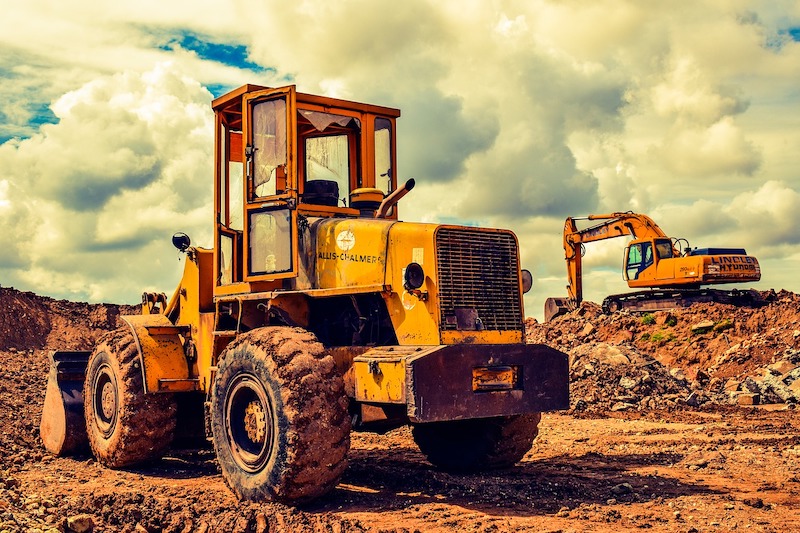Thirty-nine percent of contractors report that project owners have halted or canceled current construction projects amid deteriorating economic conditions, according to a survey released today by the Associated General Contractors of America. Association officials warned that these cancellations mean massive job losses are likely soon unless Congress passes targeted recovery measures to boost infrastructure funding, compensate firms for lost or delayed federally funded work and provide needed pension relief. The project cancellations are particularly severe in light of new data showing that 42 states added construction jobs through February.
“The abrupt plunge in economic activity is taking a swift and severe toll on construction,” said Ken Simonson, the association’s chief economist, noting that only 18% of respondents have been ordered to halt work by elected officials. “The sudden drop in demand stands in sharp contrast to the strong employment levels this industry was experiencing just a few weeks ago.” Click here for additional video comments from Mr. Simonson.
In the association’s latest online survey, conducted between March 23 and 26, 45% of the 1,640 respondents reported experiencing project delays or disruptions. Shortages of material, parts and equipment, including vital personal protective equipment for workers such as respirators, were reported by 23% of respondents. Eighteen percent reported shortages of craftworkers, while 16% said projects were delayed by shortages of government workers needed for inspections, permits and other actions. Thirteen percent said delay or disruption had occurred because a potentially infected person had visited a jobsite.
The survey also found that 35% of firms said suppliers had notified them or their subcontractors that some deliveries would be delayed or canceled, the economist added. He noted that only 22% reported similar supply chain challenges last week. That survey was conducted between March 17-19. However, 8% of firms did report they have added new work expanding health care and other facilities needed to respond to the growing health crisis.
In contrast to the rapidly deteriorating current market conditions, the association also released new construction employment data showing that most states – 42 – added construction jobs between February 2019 and February 2020. Industry employment declined over the year in eight states and the District of Columbia. From January to February, 37 states and D.C. added construction jobs, while 11 states shed jobs and two states had no change.
Association officials warned that while the coronavirus relief measure scheduled for a vote in the House today will provide some immediate help for construction workers and their employers, Congress must do more to protect high-paying construction jobs. They said new investments in infrastructure, relief from losses incurred on delayed or canceled federally funded projects and protections for multi-employer pensions will help the industry recover from the economic impacts of the pandemic.
“The steps firms are taking to protect workers from the coronavirus unfortunately won’t be enough to save many of them from the economic damage the pandemic is creating,” said Stephen E. Sandherr, the association’s chief executive officer. “Construction workers and employers need more than a lifeline, they need a recovery plan.”
View the state employment data, rankings, and map. View AGC’s coronavirus resources and survey.
Related Stories
Office Buildings | Jun 3, 2024
Insights for working well in a hybrid world
GBBN Principal and Interior Designer Beth Latto, NCIDQ, LEED AP, ID+C, WELL AP, share a few takeaways, insights, and lessons learned from a recent Post Occupancy Evaluation of the firm's Cincinnati, Ohio, office.
MFPRO+ Special Reports | May 6, 2024
Top 10 trends in affordable housing
Among affordable housing developers today, there’s one commonality tying projects together: uncertainty. AEC firms share their latest insights and philosophies on the future of affordable housing in BD+C's 2023 Multifamily Annual Report.
K-12 Schools | Apr 29, 2024
Tomorrow's classrooms: Designing schools for the digital age
In a world where technology’s rapid pace has reshaped how we live, work, and communicate, it should be no surprise that it’s also changing the PreK-12 education landscape.
Healthcare Facilities | Mar 18, 2024
A modular construction solution to the mental healthcare crisis
Maria Ionescu, Senior Medical Planner, Stantec, shares a tested solution for the overburdened emergency department: Modular hub-and-spoke design.
Office Buildings | Mar 8, 2024
Conference room design for the hybrid era
Sam Griesgraber, Senior Interior Designer, BWBR, shares considerations for conference room design in the era of hybrid work.
Airports | Jan 15, 2024
How to keep airports functional during construction
Gensler's aviation experts share new ideas about how to make the airport construction process better moving forward.
Apartments | Jan 9, 2024
Apartment developer survey indicates dramatic decrease in starts this year
Over 56 developers, operators, and investors across the country were surveyed in John Burns Research and Consulting's recently-launched Apartment Developer and Investor Survey.
MFPRO+ Special Reports | Jan 4, 2024
Top 10 trends in multifamily rental housing
Demographic and economic shifts, along with work and lifestyle changes, have made apartment living preferable for a wider range of buyers and renters. These top 10 trends in multifamily housing come from BD+C's 2023 Multifamily Annual Report.
Urban Planning | Dec 18, 2023
The impacts of affordability, remote work, and personal safety on urban life
Data from Gensler's City Pulse Survey shows that although people are satisfied with their city's experience, it may not be enough.
Senior Living Design | Oct 30, 2023
Navigating architectural challenges—from 'unbuildable' to unbelievable
Mick Schaefer, AIA, NCARB, LEED GA, recounts the challenges Vessel Architecture & Design had to overcome while designing a state-of-the-art senior living facility.

















